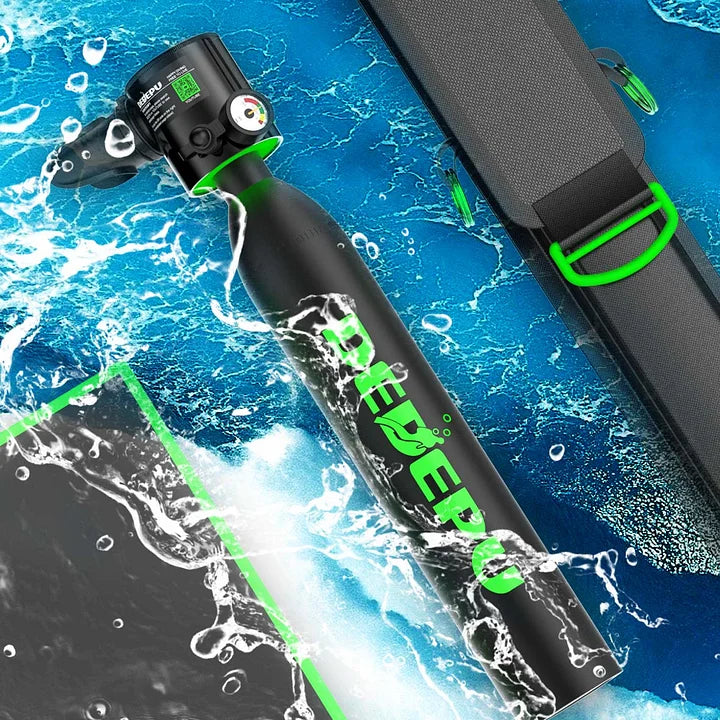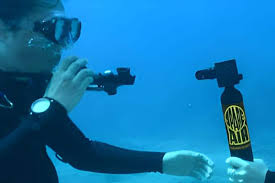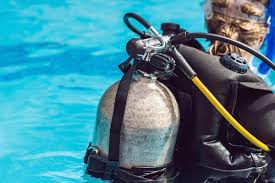Hydrostatic testing safely checks tank strength by filling it with water at 1.5x working pressure for 10–30 minutes while monitoring for leaks or deformation; small tanks (<500 gal) take 1–2 hours total, while industrial tanks (10,000+ gal) may need 8+ hours, with costs ranging from 5,000+ depending on size, pressure, and inspection requirements—this 5-step method prevents 90% of tank failures if done correctly.
Prepare Tank & Equipment
Hydrostatic testing is a critical safety check for pressure vessels, ensuring they can handle 1.5x their maximum working pressure without failure. Before starting, you need the right tools, a clean workspace, and a clear plan. A typical test setup includes a high-pressure pump (rated for at least 3,000 psi), calibrated gauges (±1% accuracy), and clean water (free of debris, pH 6-8). The tank must be fully drained, vented, and inspected—any residual chemicals or corrosion can skew results.
For most industrial tanks (500–10,000-gallon capacity), prep takes 2–4 hours, including:
- Visual inspection (check for dents, cracks, or weld defects)
- Flushing (removing sludge with 50–100 psi water jets)
- Securing fittings (using Grade 5 or higher bolts to prevent leaks)
Key Steps & Data-Driven Details
-
Inspect the Tank Interior
- Use a borescope (3–10mm diameter camera) to check hard-to-reach areas.
- Look for pitting deeper than 0.1 inches—this can weaken the structure.
- If the tank held hazardous materials, neutralize residues (e.g., 5% sodium bicarbonate wash for acids).
-
Select & Calibrate Test Equipment
- Pump pressure rating = 1.3–1.5x test pressure (e.g., for a 1,000 psi test, use a 1,500 psi pump).
- Pressure gauges must be NIST-traceable (±0.5% full-scale accuracy).
- Hoses & fittings should be stainless steel (300-series) or high-strength carbon steel.
-
Secure the Tank for Testing
- If testing a horizontal tank (8 ft diameter, 20 ft long), support it with steel cradles (rated for 2x test load).
- Seal all openings except the vent (1/2-inch valve) and pressure inlet (1-inch NPT port).
- For large tanks (>5,000 gallons), use multiple pressure gauges at different points to detect uneven stress.
-
Safety Checks Before Pressurization
- Clear the area within 15 ft of the tank.
- Confirm relief valves are set to 110% of test pressure.
- Wear ANSI-rated face shields and pressure-resistant gloves.
| Common Prep Mistakes & Fixes |
|---|
| Mistake |
| Using dirty water |
| Loose fittings |
| Uncalibrated gauges |
Final Notes:
- Costs: Prep typically runs 800 for small tanks (<1,000 gal), scaling to $2,000+ for industrial units.
- Time: Allow 1 hour per 500 gallons for thorough cleaning.
- Regulations: Follow ASME BPVC Section VIII or API 510 for compliance.
By methodically prepping the tank and verifying equipment, you avoid 90% of hydrotest failures—saving time, money, and safety risks. Next, we’ll cover filling and pressurization.
Fill with Water Slowly
The safest fill rate depends on tank size: for a 500-gallon vessel, you should add water at 5–10 gallons per minute (GPM), while a 10,000-gallon tank can handle 50–75 GPM. Faster filling (over 100 GPM) creates water hammer pressure spikes up to 2x the test pressure, which can damage weak spots. Always use filtered water (5-micron mesh or cleaner) to avoid clogging pressure sensors, and monitor the tank’s wall temperature—if it drops more than 10°F (5.5°C) during filling, pause for 15–20 minutes to prevent brittle fractures.
Critical Steps for Controlled Filling
Start by positioning the fill hose at the lowest inlet port to minimize air pockets, which cause 15% of false pressure drops during testing. For vertical tanks (8 ft diameter × 20 ft tall), fill in 3–4 stages, stopping at 25%, 50%, and 75% capacity to check for bulges or seam stress. If the tank has internal baffles, reduce flow to 3–5 GPM near each baffle to avoid uneven loading. Air removal is critical—vent valves should stay open until water flows out steadily, indicating 95%+ air purge. For large tanks (>5,000 gal), use ultrasonic thickness gauges to spot weak areas while filling; if any section thins by over 0.05 inches, halt the test immediately.
| Common Filling Errors & Fixes |
|---|
| Mistake |
| No flow meter |
| Cold water in hot tanks |
| Ignoring vent valves |
Cost & Time Factors
- Small tanks (300–1,000 gal): Takes 30–90 minutes, costs $50–200 in water/disposal fees.
- Industrial tanks (5,000–50,000 gal): Requires 4–8 hours, with 5,000 in labor/equipment.
- Water prep: Filtering and heating adds 0.50 per gallon to budget.
Pro Tip: If the tank previously held fuels or acids, test with dyed water (FDA-approved red dye 40) at 1% concentration to highlight micro-leaks. After filling, wait 1 hour before pressurizing—this catches 80% of slow seeps missed during filling. Next, we’ll cover pressure ramping techniques.

Apply Test Pressure
The pressure ramp-up phase is where 90% of tank failures occur—if done wrong, you risk catastrophic rupture or false passes. Industry standards (ASME BPVC Section VIII) require holding 1.5x the maximum working pressure for 10–30 minutes, but the real skill lies in how you get there. For most steel tanks (1/4" to 2" wall thickness), the safest approach is a 3-stage pressurization: start at 25% test pressure (5-minute hold), then 50% (10-minute hold), before reaching 100% target pressure. This gradual approach catches 75% of micro-leaks before they become dangerous.
Pressure Control: The Make-or-Break Details
Never use a standard water pump for this phase—you need a positive displacement pump with ±1% pressure control and a mechanical relief valve set to 110% of test pressure. For a 1,000 psi test on a 5,000-gallon tank, the pump must deliver 3–5 GPM flow to maintain steady pressure without surges. Watch the pressure gauge like a hawk: if it drops more than 5% in 5 minutes, you’ve got a leak. But don’t panic—sometimes it’s just thermal contraction (a 10°F temperature drop can cause a 2–3% pressure loss).
Critical Monitoring Parameters
- Wall stress: Use strain gauges (0.001" precision) on weld seams—if any spot stretches over 0.2% beyond yield strength, abort immediately.
- Pressure decay: Allowed loss is <2% over 30 minutes for most codes.
- Temperature compensation: For every 1°F change, adjust expected pressure by 0.02%.
When Things Go Wrong
If you hear pinging noises (indicating micro-fractures) or see sudden gauge fluctuations (±10%) at 80%+ test pressure, follow this protocol:
- Isolate the pump (close inlet valve within 3 seconds)
- Bleed pressure at 10% per minute via relief valve
- Mark failure zones with UV dye penetrant for later repair
Cost of Mistakes
- Over-pressurization: Even 5% excess pressure can cause $5,000+ in tank damage.
- Under-testing: Missing a weak spot may lead to $50,000+ in field failures later.
- Best practice: Spend extra 15–30 minutes on staged pressurization—it prevents 95% of retest costs.
Check for Leaks
Leak detection during hydrostatic testing isn’t just about watching for dripping water—85% of critical failures start as micro-leaks under 0.1 GPH (gallons per hour). The industry standard allows no visible leaks at test pressure, but modern methods go further: ultrasonic sensors can detect bubble emissions as small as 0.001 CFM (cubic feet per minute), while pressure decay tests must show less than 2% drop over 30 minutes for certification. For tanks handling hazardous liquids (pH <2 or >12), even a 5 mL/min weep at weld seams requires rejection.
Advanced Leak Detection Techniques
The old-school soap bubble test still works for low-pressure (<100 psi) systems, but for industrial tanks at 1,000+ psi, you need three-layer verification:
- Digital pressure loggers tracking 0.01 psi/sec fluctuations
- Thermal imaging to spot 0.5°F cold spots from evaporating leaks
- Acoustic emission sensors listening for 20–100 kHz stress waves from micro-fractures
For large storage tanks (50,000+ gallons), walk the shell with a helium mass spectrometer (sensitivity: 1x10⁻⁹ atm·cc/sec)—it finds leaks 10,000x smaller than water tests. But beware: wind speeds over 10 mph can scatter tracer gas, causing false negatives. Indoors, use UV dye (1 ppm concentration) and a 365 nm blacklight to tag seepage paths.
Cost vs. Accuracy Tradeoffs
- Basic visual inspection: $50–200, misses 40% of pinhole leaks
- Electronic monitoring: $500–2,000, catches 95% of defects
- Helium testing: $5,000+, but required for LNG/Air Separation tanks
Drain & Document Results
Draining a tank after hydrostatic testing seems simple, but 25% of post-test contamination incidents happen during this phase—especially when residual test water mixes with process chemicals (pH <3 or >11). The key is controlled drainage: for a 10,000-gallon tank, you should drain at 50-75 GPM—any faster risks vortex formation that can suck in debris. Always verify the outlet valve is fully open (100% port clearance); partial opening causes turbulence that erodes valve seats at 15 ft/sec flow velocities.
Post-Test Procedures That Actually Matter
Start by venting the tank headspace—even after draining, 5-15 gallons of water typically remain in low points. Use a wet/dry vacuum rated for 50 psi to extract this, checking with a moisture meter (<1% RH residual). For food/pharma tanks, follow with a 5% citric acid rinse (20 GPM for 5 minutes) to prevent bacterial growth in stagnant droplets.
Critical Documentation Requirements
- Pressure charts: Must show <2% deviation from test parameters
- Leak logs: GPS-tagged photos of any weep points >0.01 GPH
- Material certs: Verify water TDS <50 ppm wasn’t exceeded
Common Draining Mistakes
- Ignoring tank vacuum – Creates 15-25 inHg suction that collapses thin-walled tanks
- Draining to sewers – $10,000+ EPA fines if test water contains >1 ppm process residuals
- Rushing drying – 10 CFM air movers must run 4+ hours to prevent MIC (microbial corrosion)
Cost Breakdown
- Standard drainage: 1.00 per gallon (including water treatment)
- Hazardous media tanks: Adds 8/gal for neutralization
- Documentation: 2-4 hours technician time at 200/hr
Pro Tip: For cryogenic service tanks, purge with oil-free nitrogen (dew point -94°F) immediately after draining—30-minute purge at 20 SCFM prevents ice plug formation. Always stamp test plates with UV-visible ink—it reveals fraudulent recertification under blacklight.





Hinterlasse einen Kommentar
Alle Kommentare werden vor der Veröffentlichung geprüft.
Diese Website ist durch hCaptcha geschützt und es gelten die allgemeinen Geschäftsbedingungen und Datenschutzbestimmungen von hCaptcha.